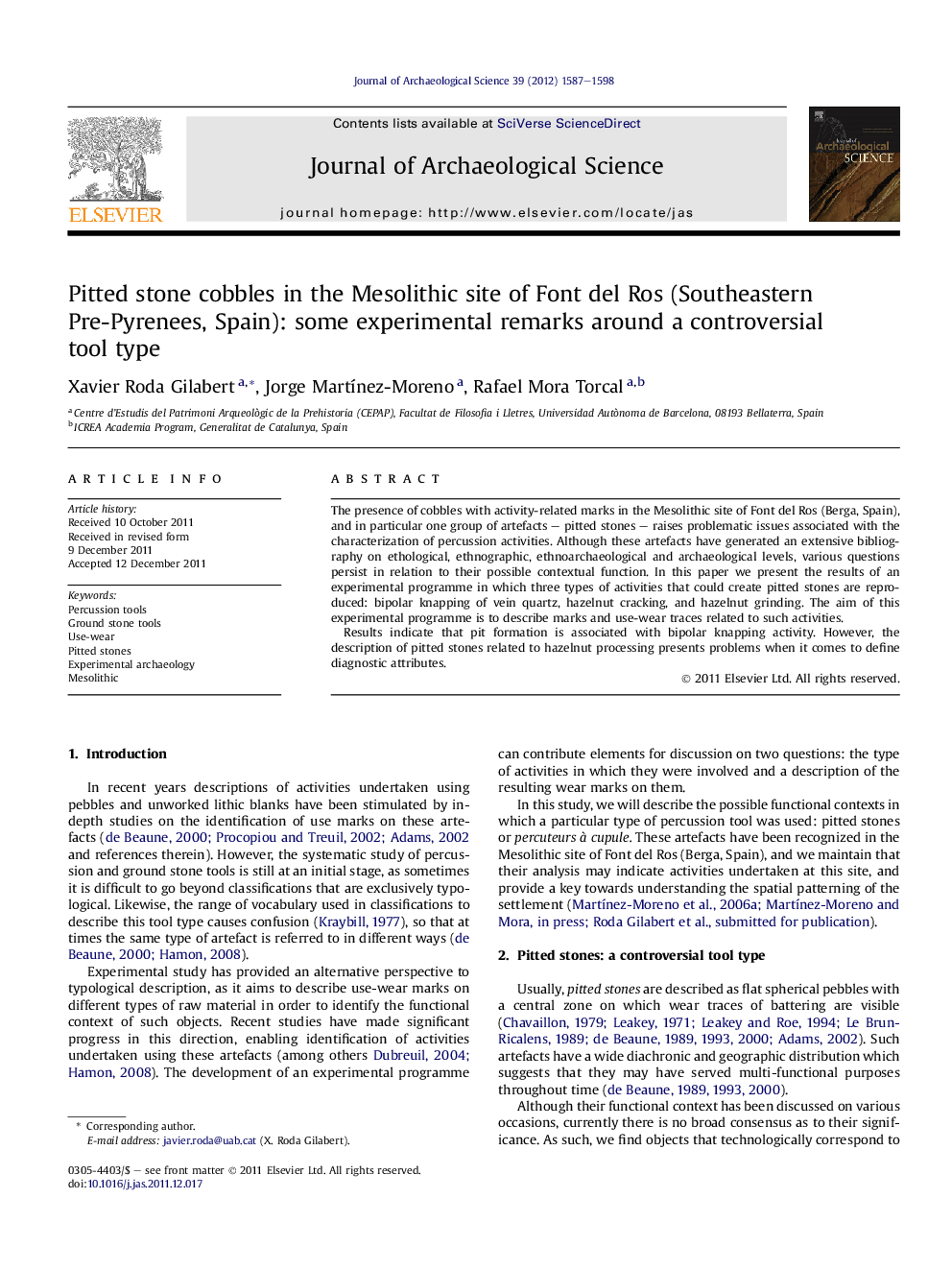| Article ID | Journal | Published Year | Pages | File Type |
|---|---|---|---|---|
| 1035775 | Journal of Archaeological Science | 2012 | 12 Pages |
The presence of cobbles with activity-related marks in the Mesolithic site of Font del Ros (Berga, Spain), and in particular one group of artefacts – pitted stones – raises problematic issues associated with the characterization of percussion activities. Although these artefacts have generated an extensive bibliography on ethological, ethnographic, ethnoarchaeological and archaeological levels, various questions persist in relation to their possible contextual function. In this paper we present the results of an experimental programme in which three types of activities that could create pitted stones are reproduced: bipolar knapping of vein quartz, hazelnut cracking, and hazelnut grinding. The aim of this experimental programme is to describe marks and use-wear traces related to such activities.Results indicate that pit formation is associated with bipolar knapping activity. However, the description of pitted stones related to hazelnut processing presents problems when it comes to define diagnostic attributes.
► We clarify the functional context of the pitted stones in the European Mesolithic sites. ► Strong association between bipolar knapping and the formation of pits in percussion tools. ► Development of pits pitted stones by means of the cracking and/or grinding of hazelnuts is rejected. ► Multi-functional nature of percussion tools is highlighted.
